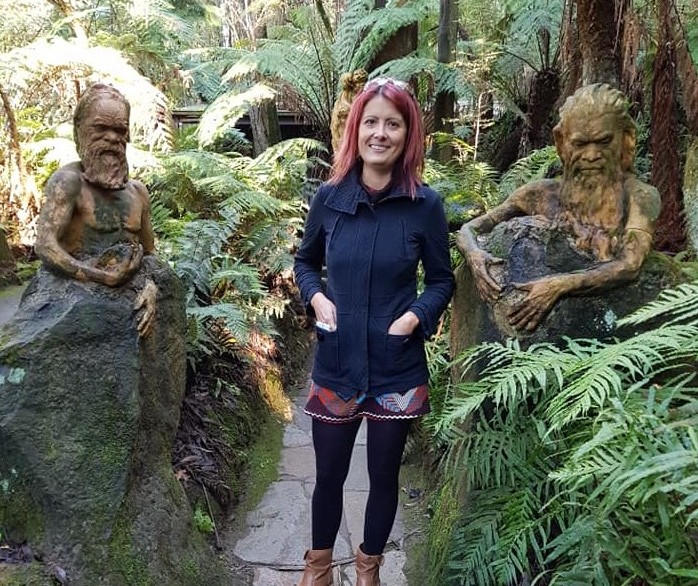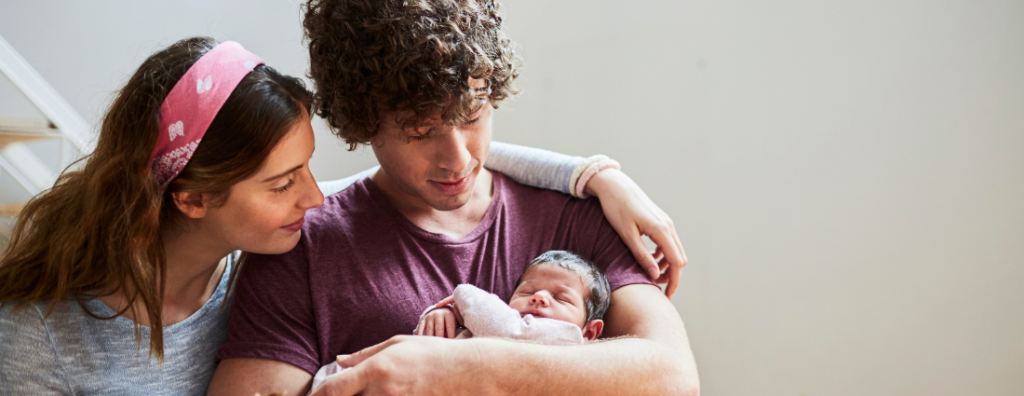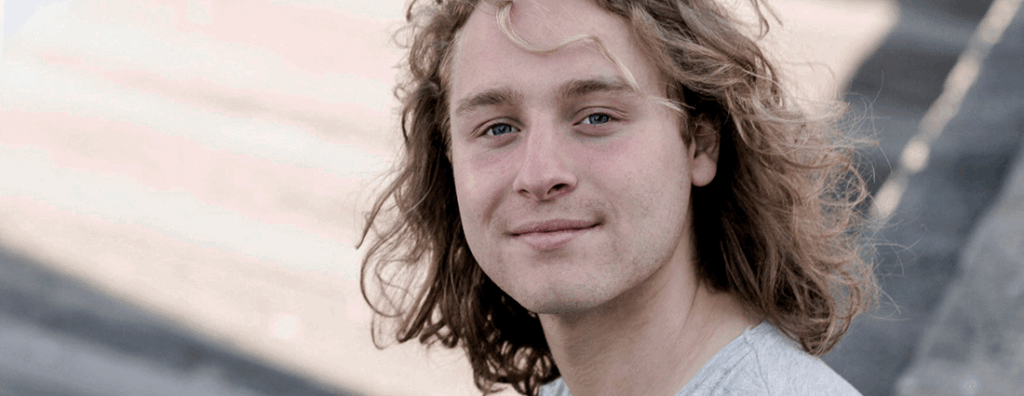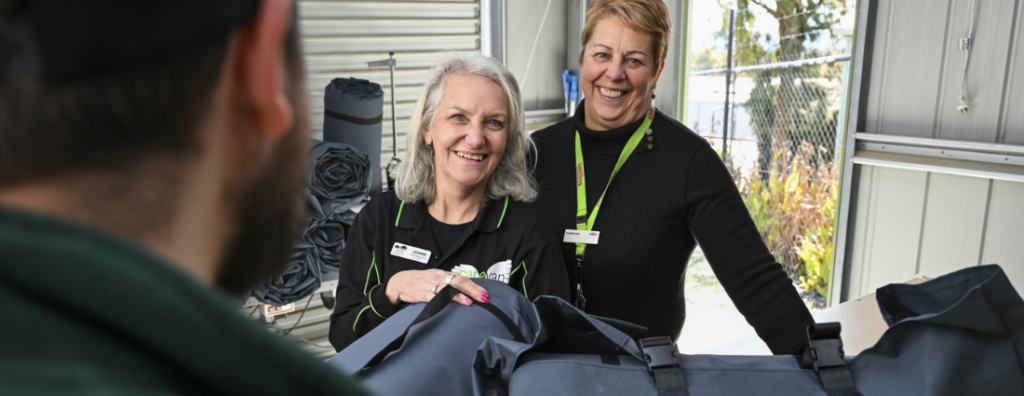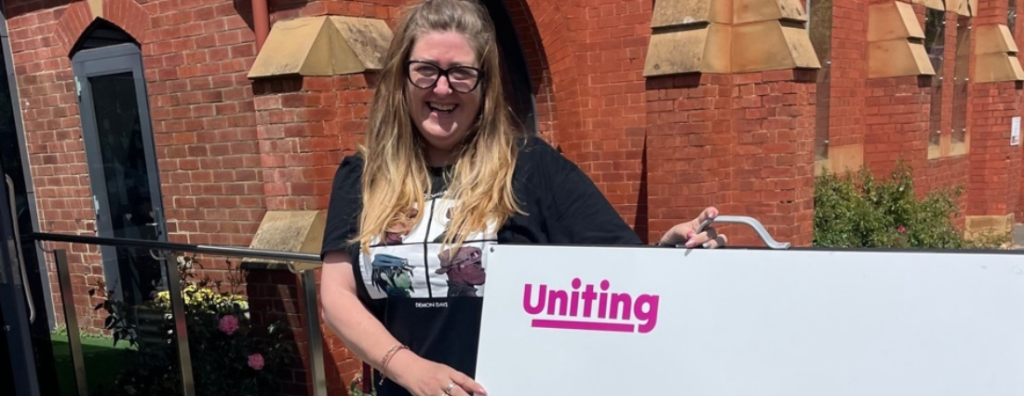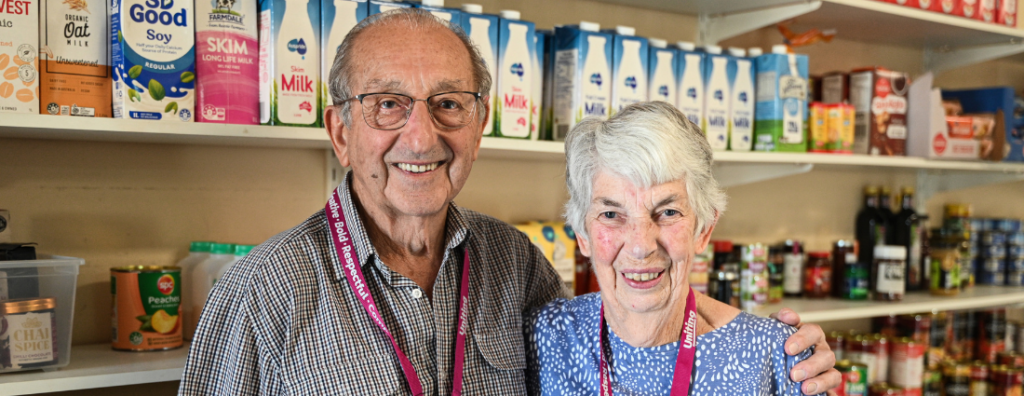We invited First Nations woman and Uniting Aged and Community Services Team Leader, Jodie Hampson to share her thoughts on NAIDOC Week and being a First Nations women with us.
…
The theme of this year’s NAIDOC Week is #BecauseOfHerWeCan. Why is
this theme is important to you?
So often, volunteers and workers in the community – and in Aboriginal communities – are women. I see them as the quiet achievers, the community builders, the protectors of history and those passing down culture to our next generations. We are the women of the oldest continuing culture on the planet, we are strong and bringing up our families whilst connecting our past to today.
…
Why is it important our Indigenous and Torres Strait Islander peoples are a big part of making decisions about their community, land, events and reconciliation plans?
I think that many of the problems throughout history have been because of forced decisions without regarding our culture or understandings. Well, you can force decisions on a people, but if you do, the things you’re implementing won’t work, because you haven’t asked the people your decisions will impact the most.
Things like the recent Treaty bill and the extensive engagement they undertook as a part of the process are a great sign of how we’ve progressed in this thinking. I think that we’re learning from previous mistakes, and that’s why Aboriginal people are increasingly at the centre of determining their future. Self-determination [is] empowering, it’s not empowering to have things forced upon you. To be engaging with community Elders and leaders and acknowledging the different ways of thinking and making culturally appropriate decisions is necessary to any positive social change over the longer term.
…
How far do you feel we have come as a community, and how far have we got to go in terms of support, recognition and rights for First Nations people?
I work in a sector I love, and I’m very much hanging out with similarly minded people. And I reflect on the Reconciliation Action Plan and the Treaty work, and NAIDOC, and in those moments, I feel like we have come such a long way. But then again, I can be on a train and hear someone say something ignorant and I realise I am in a bubble.
When I come across people like that I think they weren’t always like that; they began with a childish curiosity about the world and I wonder where that was lost. Having a curiosity about culture and history and identity is important. Some people are just not interested, and perhaps are shut off from history – maybe it’s feeling a sense of guilt, but that’s not what we’re asking people to feel. We’re asking people to acknowledge past wrongs, and be sensitive but curious to learn more.
And we should be instilling that with young people as well. We’ve come a long way with the bigger level stuff, like policy and legislation, but I always bring it back to the personal and what type of Australian culture we want to build. I hope that includes respecting, acknowledging and reflecting on our history. And engage with our curiosity to learn more. Cultural identity is very interesting area I think, and such a unique thing.
…
Anything else you’d like to share about your experiences as an Aboriginal woman in contemporary society?
I’d like to share a story of growing up, I hope it helps to understand the uniqueness and complexity around cultural identity, and of my own. Aboriginality is not something you learn by sitting around and talking about, you just grow up with it and experience it.
I grew up in Queensland suburbs, a concrete jungle. But somehow I always found myself down the back. There was a creek and it was surrounded by a little bit of bush there, but not that much. I’d go down there, and I’d spend a lot of time being there, just being there, you know? I’d collect the yabbies, and I’d make a little fire and cook them up. I wasn’t hungry, I just really wanted to do it – something in me, and it just felt natural. And then I’d hear the fire truck sirens, and know I was in trouble!
I knew I was different to the other kids, and I loved doing things that the other kids didn’t do. And looking back I can see I was walking in two worlds. That’s how I can best explain it. I was going to school and doing what was expected of me and then I’d have to find ways to connect to the land and nature. It wasn’t until I got older and I think about these many stories and how it was just me finding ways to express my Aboriginality within the modern world.
It was a complicated juggle – walking in two worlds. And I think that stuff is really interesting and different for everyone. Finding out who you are and what it means to you to be Aboriginal or Torres Strait Islander. Thinking about how you feel, what makes you, you. And that journey for me, it continues today. And I’m not alone in that journey – I’ve met some amazing people that have helped me immensely and I encourage you to do the same.
